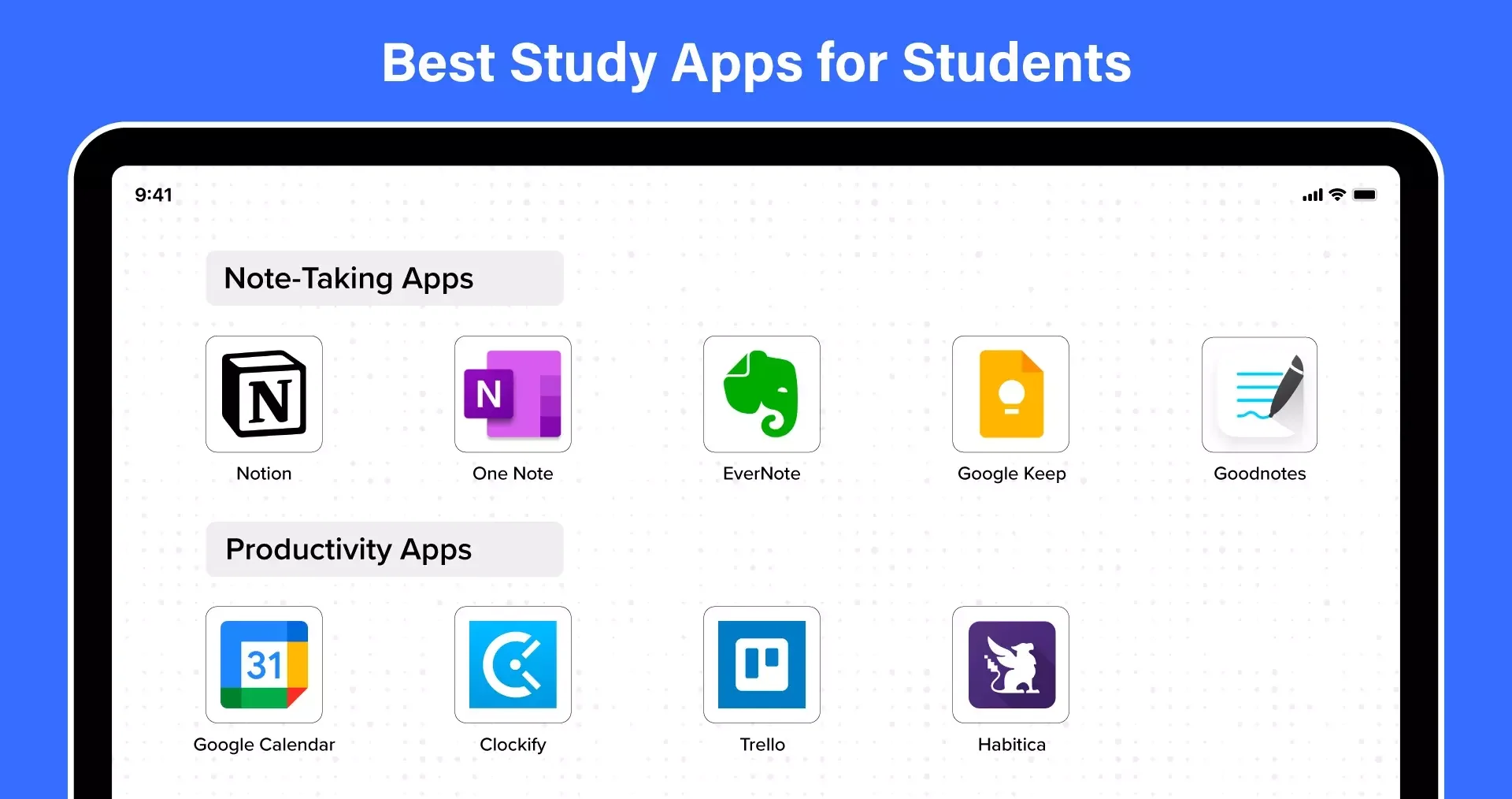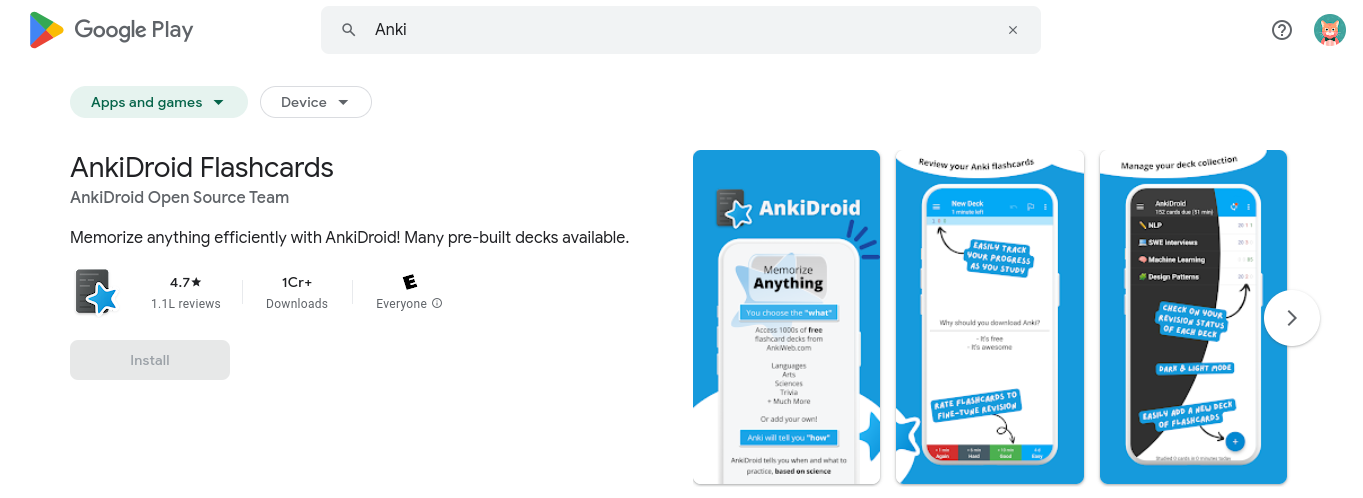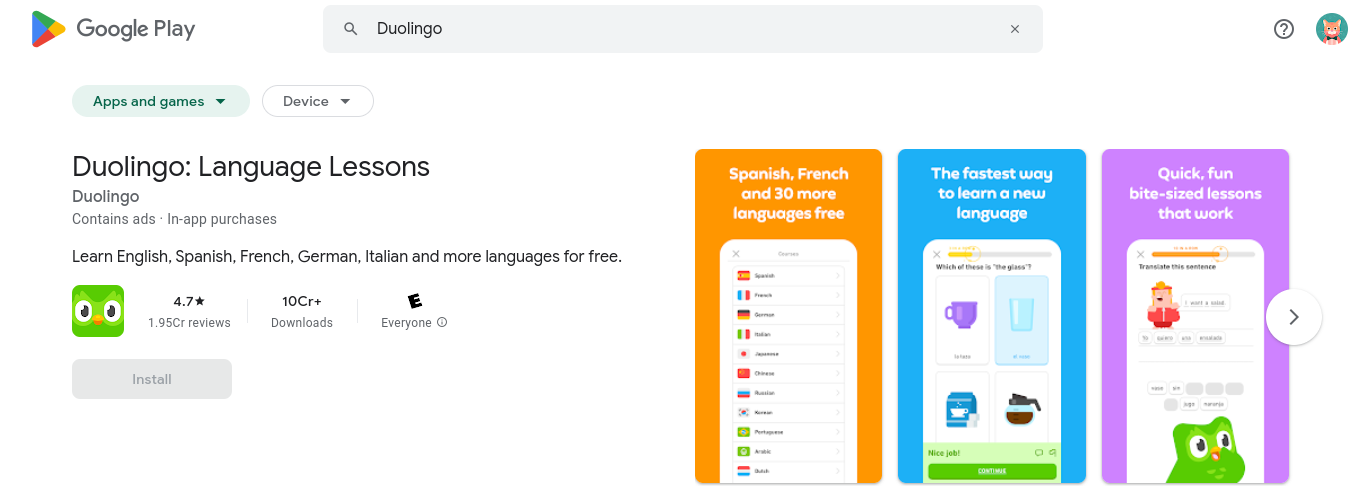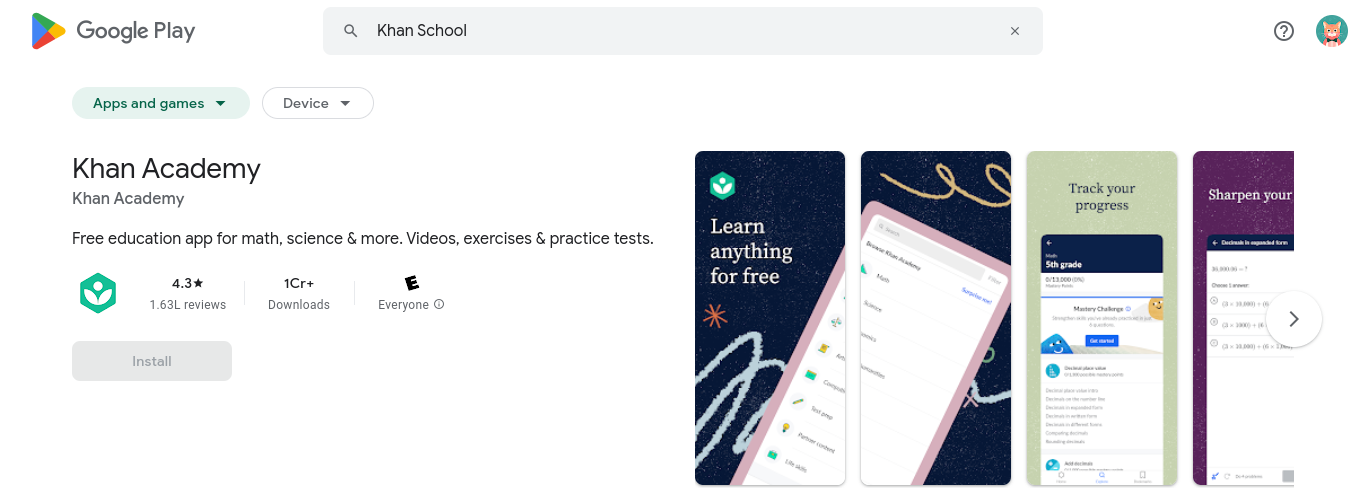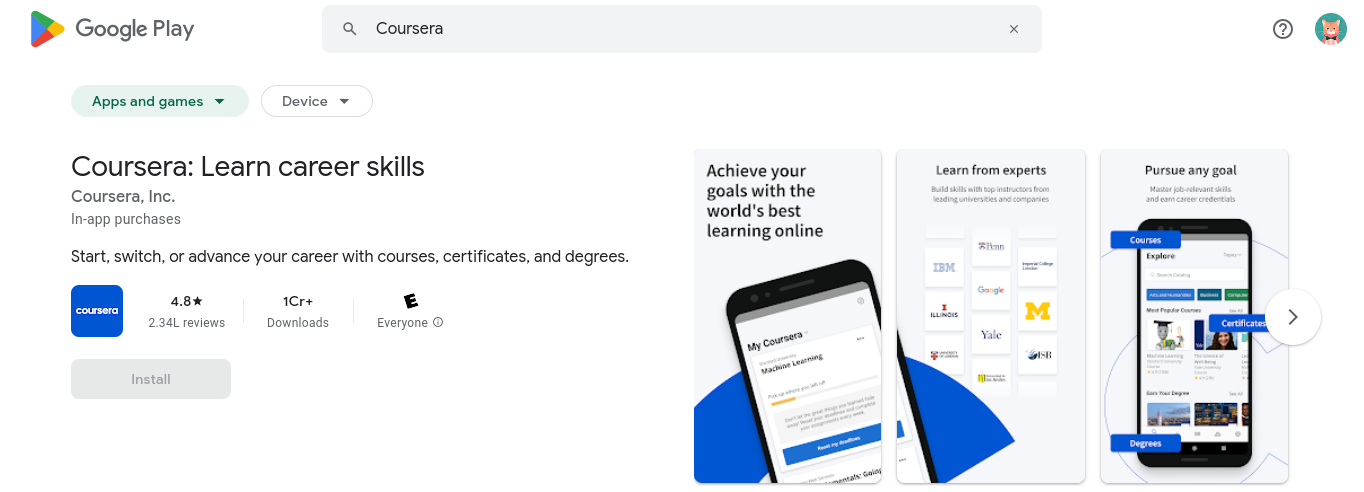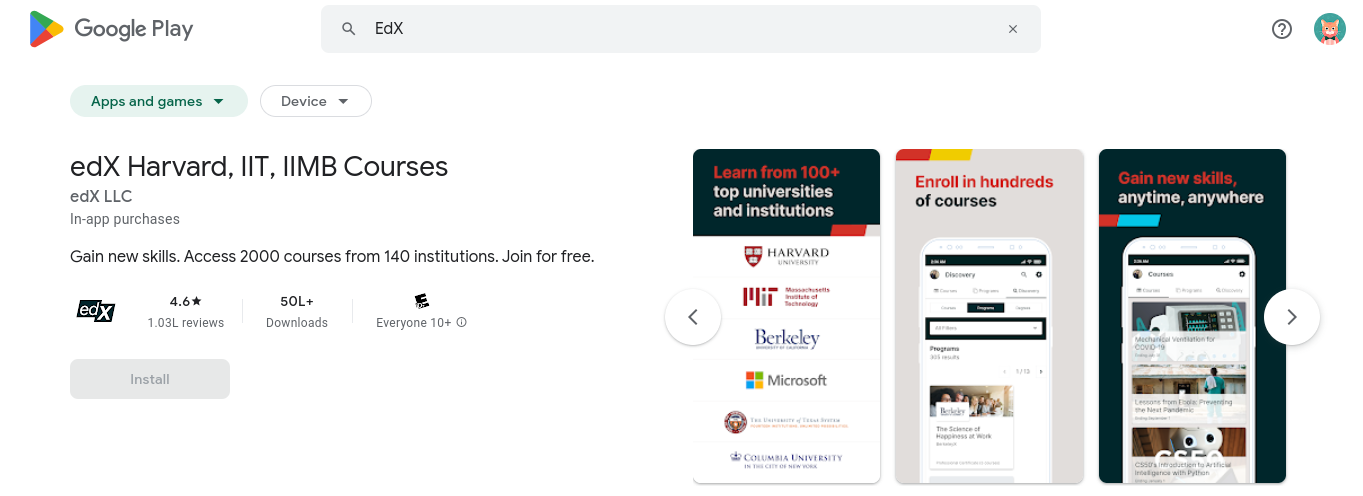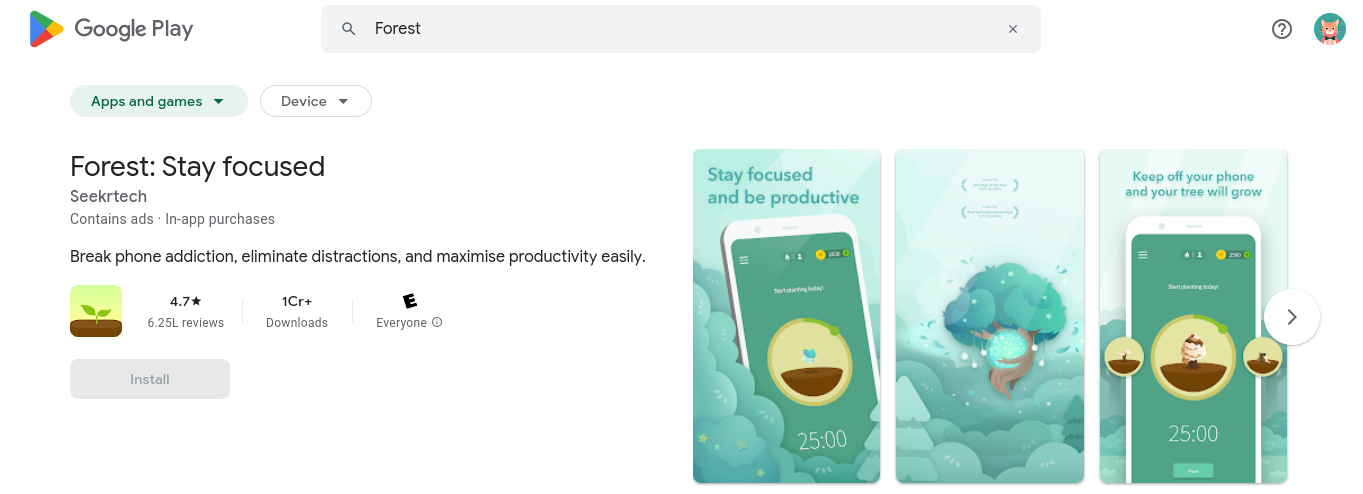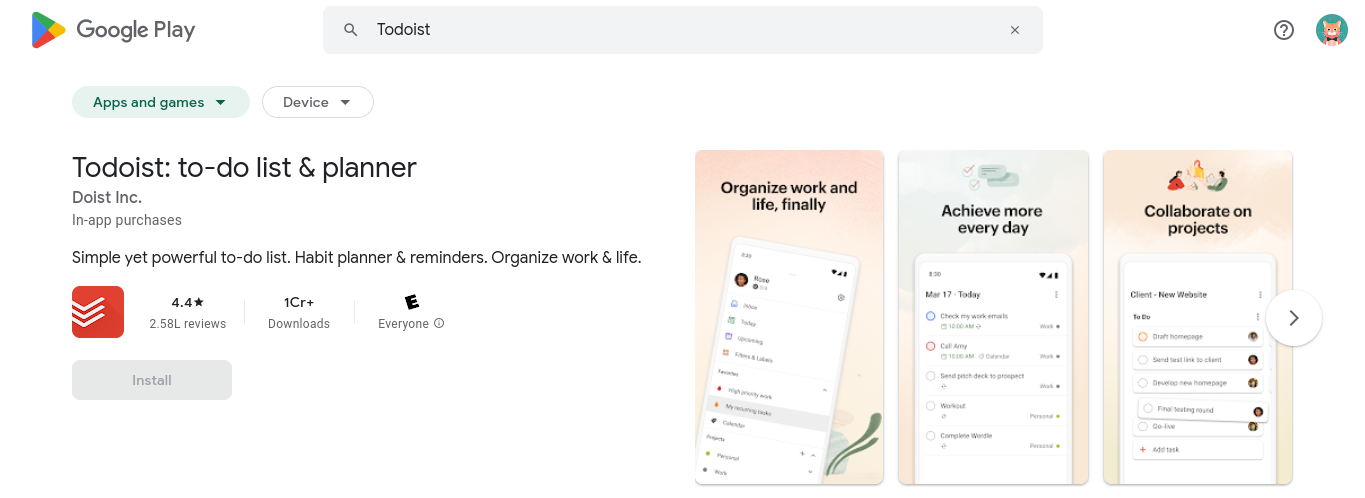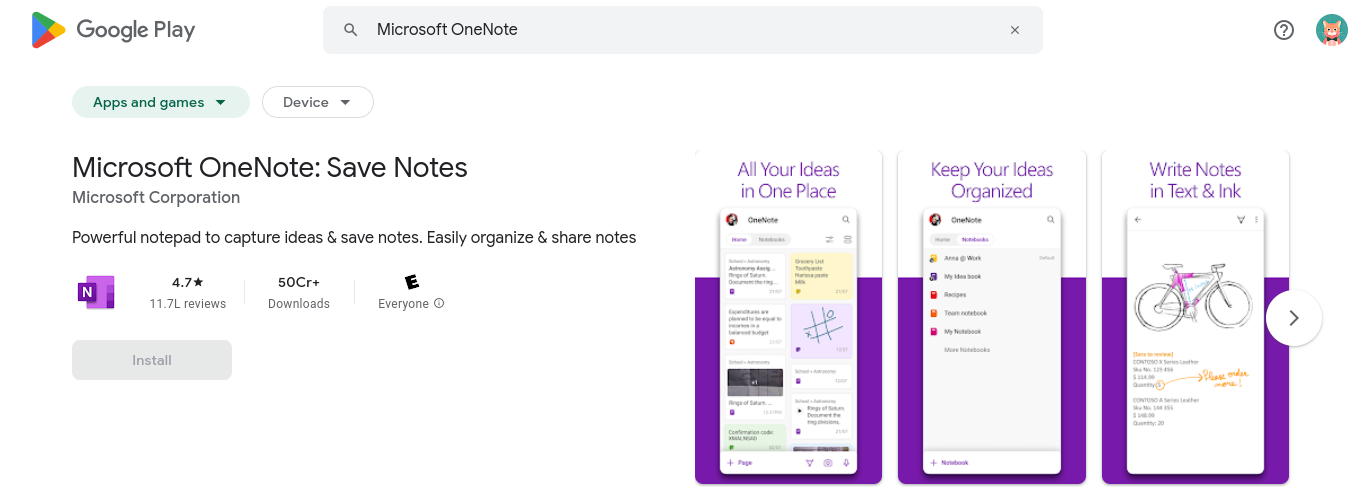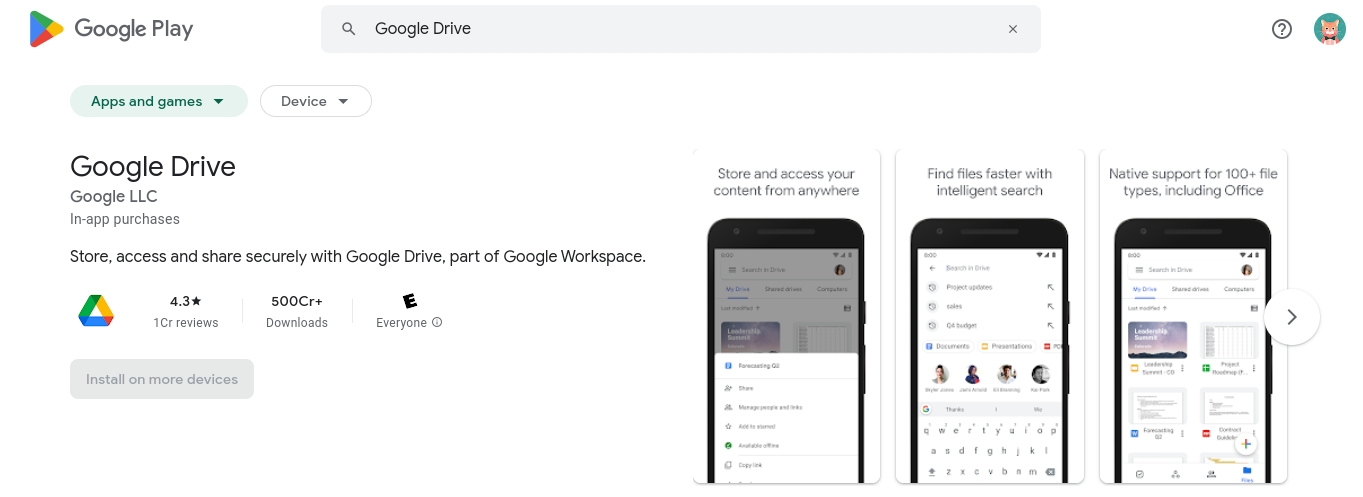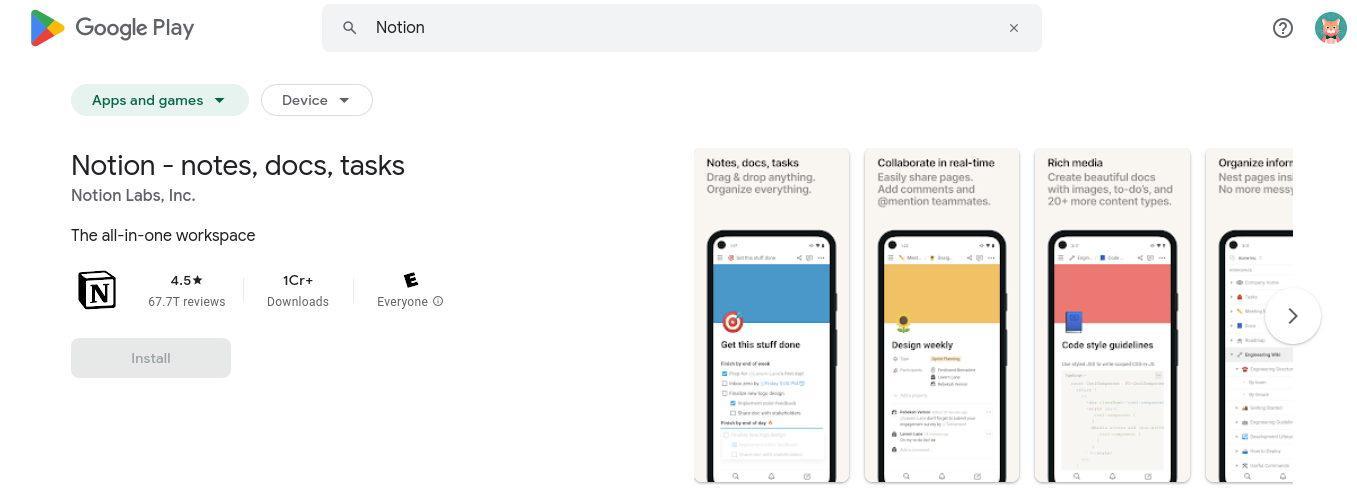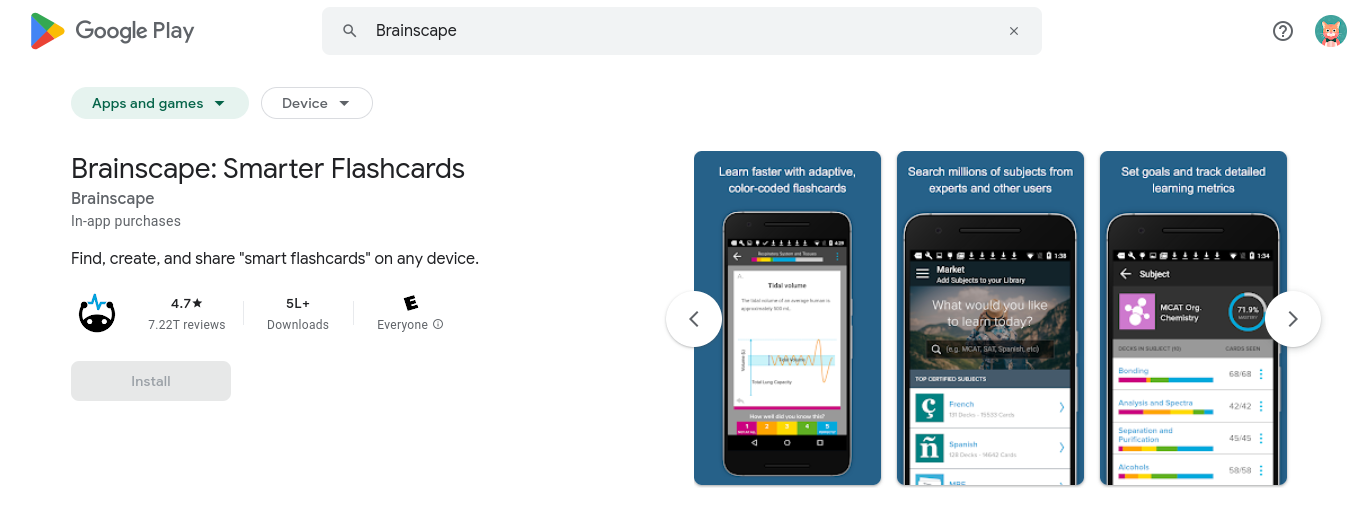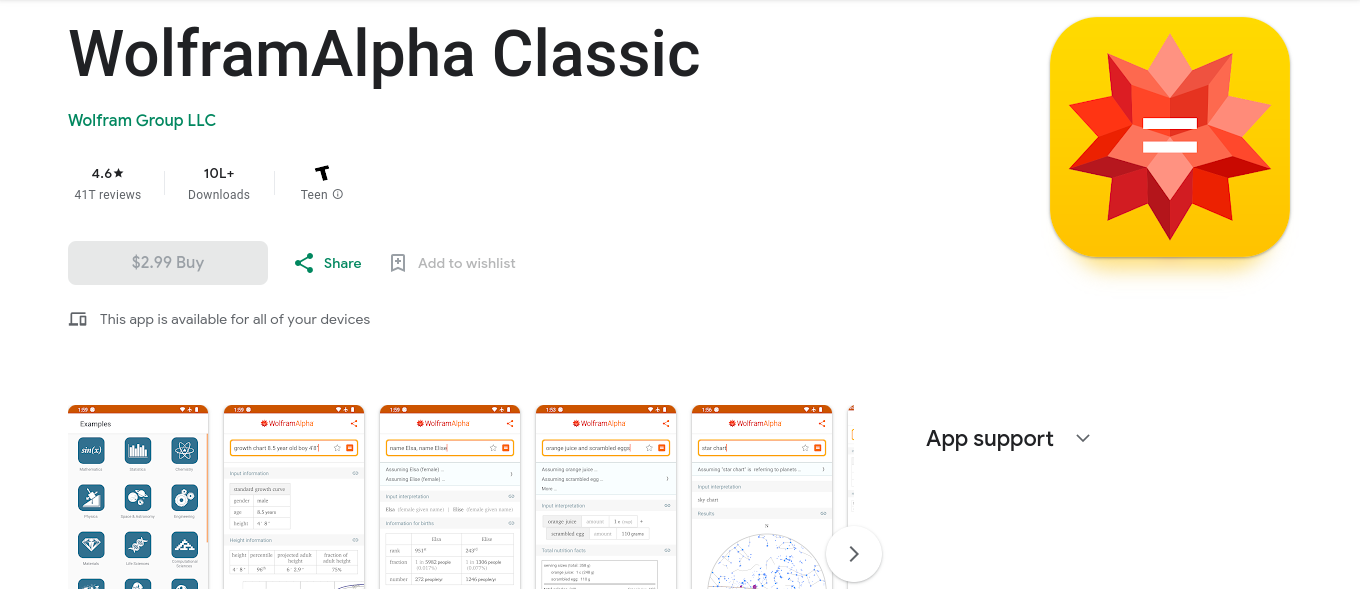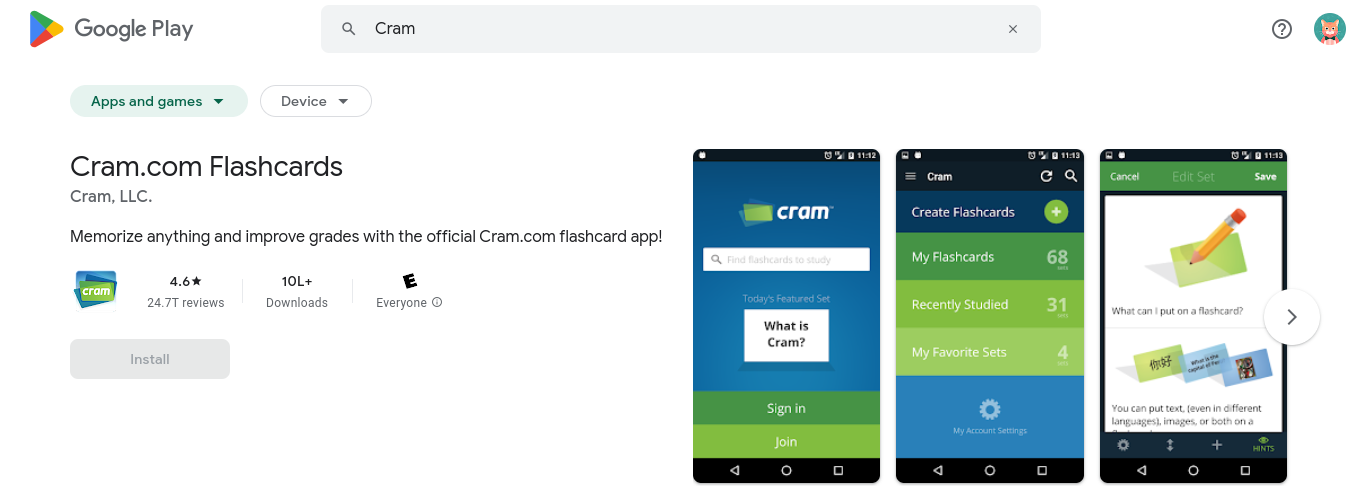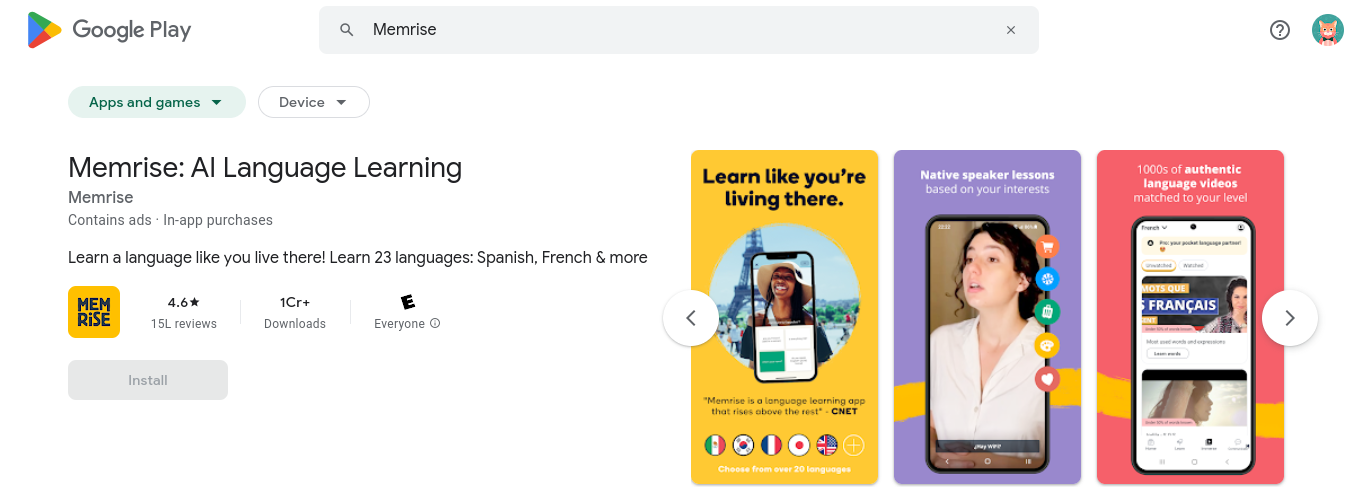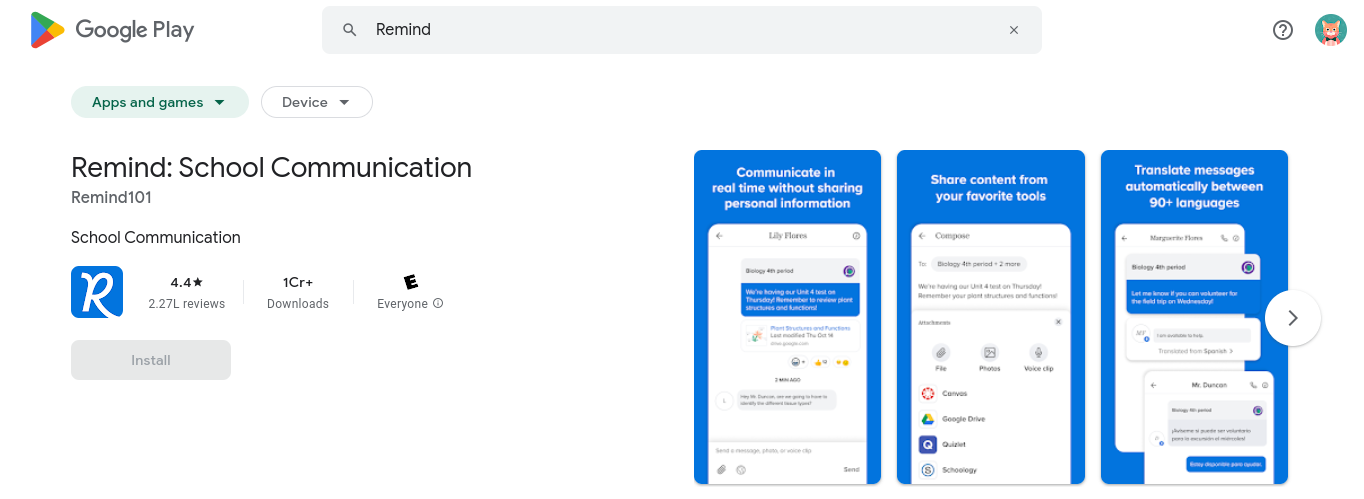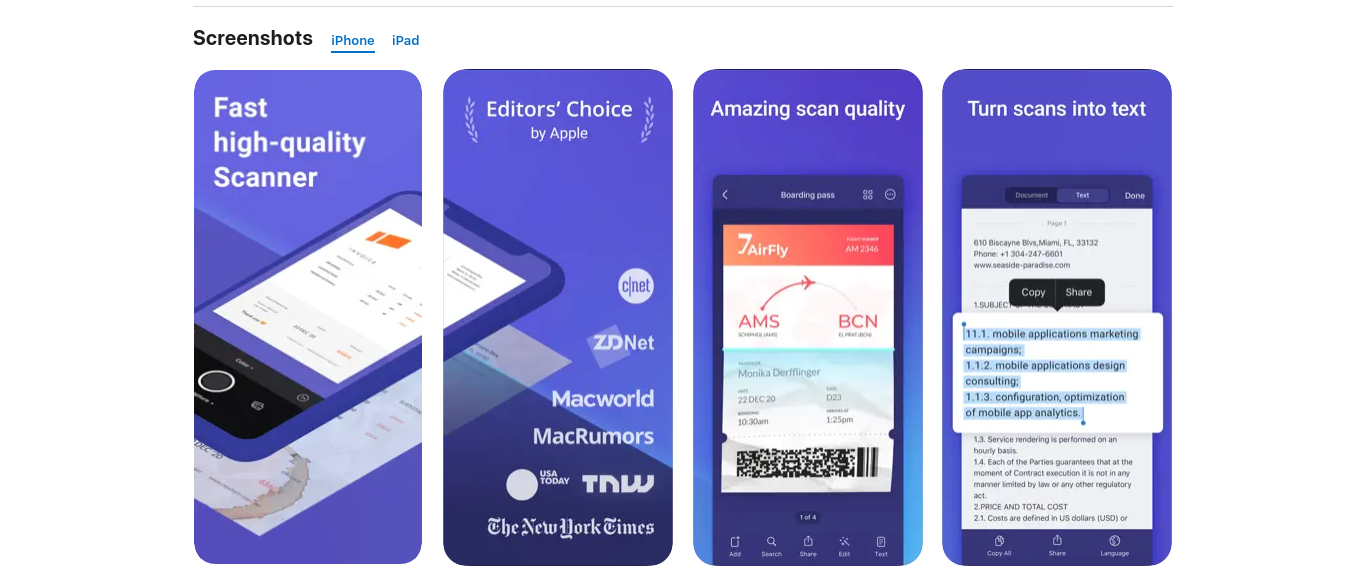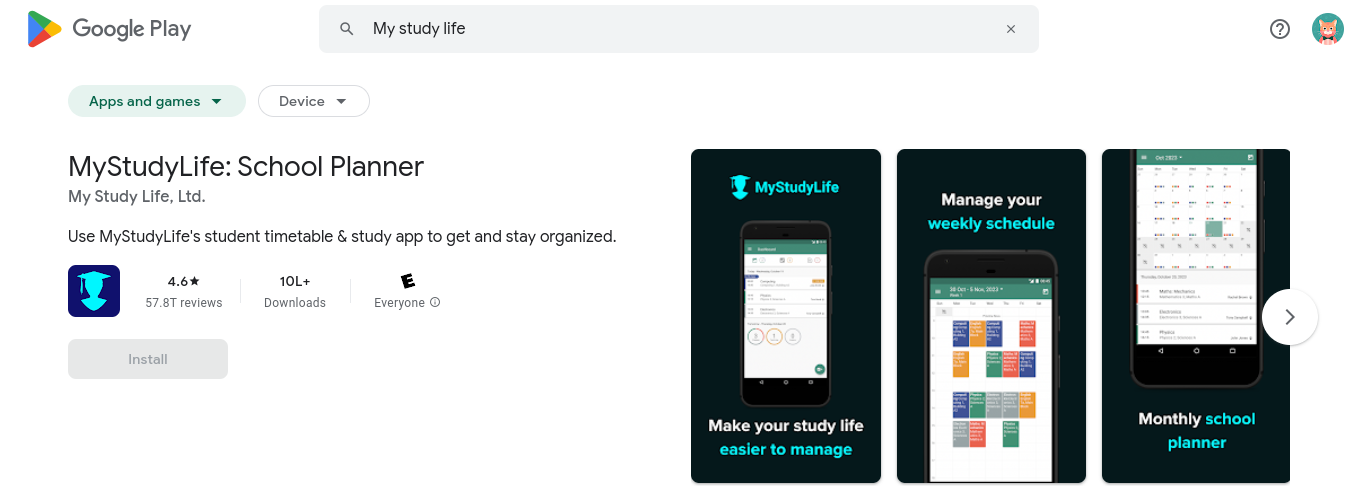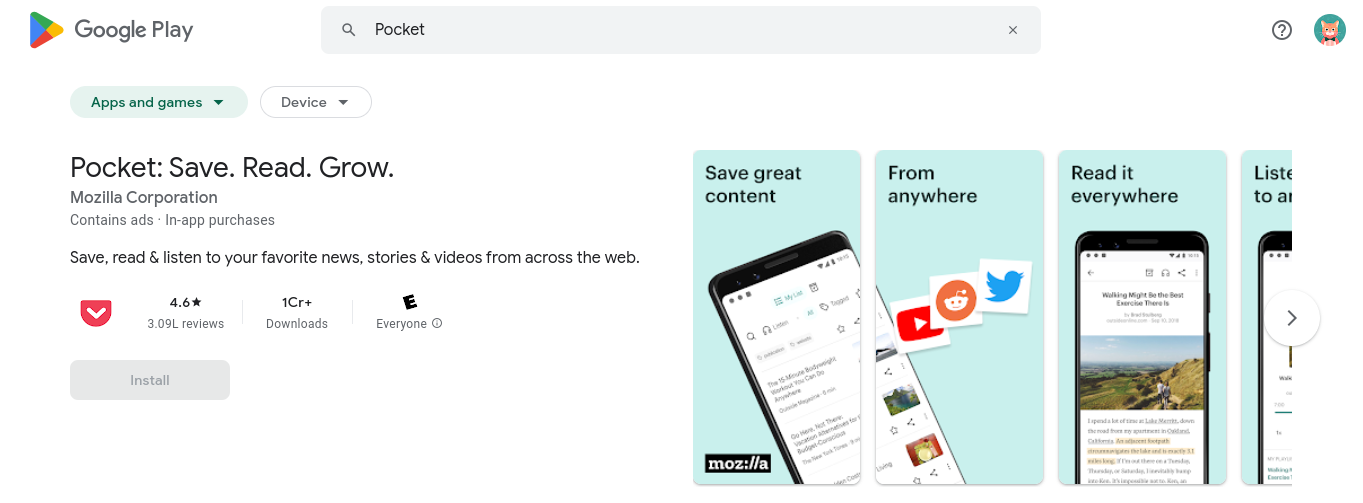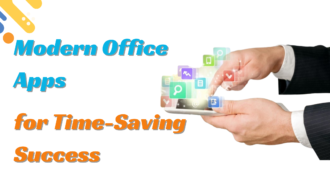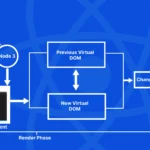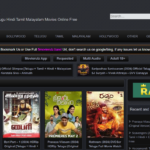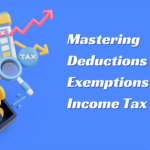Top 25 Study Apps For Students In 2023
- 0.1 Quizlet
- 0.1.1 Flashcards:
- 0.1.2 Study Modes:
- 0.1.3 Learn Mode:
- 0.1.4 Writing Mode:
- 0.1.5 Spell Mode:
- 0.1.6 Test Mode:
- 0.1.7 Audio Support:
- 0.2 Anki
- 0.2.1 SRA: Spaced Repetition
- 0.2.2 Editable Flashcards:
- 0.2.3 Notes and Card Decks:
- 0.2.4 Media Help:
- 0.2.5 Synchronize across platforms:
- 0.3 Duolingo
- 0.3.1 Learning through Gamification:
- 0.3.2 Multilingual courses:
- 0.3.3 Interactive Lessons:
- 0.3.4 Duolingo stories:
- 0.4 Khan School
- 0.4.1 Broad Subject Coverage:
- 0.4.2 Video Lessons:
- 0.4.3 Try Exercises:
- 0.4.4 Application: Customises learning.
- 0.5 Coursera
- 0.5.1 Variety of Courses:
- 0.5.2 Courses in specializations
- 0.5.3 Online Degrees:
- 0.6 EdX
- 0.6.1 Micromasters Courses:
- 0.6.2 Certificate programs for professionals:
- 0.6.3 Online Degrees:
- 0.6.4 Engaging Learning Materials:
- 0.6.5 Discuss Forums:
- 0.6.6 Assessed by peers:
- 0.7 Forest
- 0.7.1 Mechanisms of Tree Planting:
- 0.7.2 Gamification, rewards:
- 0.7.3 Focus Timer:
- 0.7.4 Customized Focus Sessions:
- 0.7.5 The Blacklist and Whitelist
- 0.7.6 Offline Mode:
- 0.8 Todoist
- 0.8.1 Making a task
- 0.8.2 Organized Project:
- 0.8.3 Due dates/times:
- 0.8.4 Priority Levels:
- 0.8.5 Filters, Labels:
- 0.9 Evernote
- 0.9.1 Note Making:
- 0.9.2 Organizing using notebooks:
- 0.9.3 Tags:
- 0.9.4 Search Function:
- 0.9.5 Web Clipper:
- 0.9.6 Scan documents:
- 0.10 Microsoft OneNote
- 0.10.1 Note Making:
- 0.10.2 Sections and notebooks:
- 0.10.3 Page Templates:
- 0.10.4 Tagging System:
- 0.11 Google Drive
- 0.11.1 Store and manage files:
- 0.11.2 A Google Doc:
- 0.11.3 A Google Sheet:
- 0.11.4 Google Slides:
- 0.11.5 Google Forms:
- 0.11.6 Google Drawings:
- 0.12 Notion
- 0.12.1 Notes, documents:
- 0.12.2 Real-time coordination:
- 0.12.3 The Database and Tables:
- 0.12.4 Boards: Kanban
- 0.12.5 Manage tasks:
- 0.13 StudyBlue
- 0.13.1 Flashcards digital:
- 0.13.2 Community-Submitted Content:
- 0.13.3 Make a quiz:
- 0.13.4 Tracking progress:
- 0.13.5 Mobile Friendly:
- 0.13.6 Textbook Integration:
- 0.14 Brainscape
- 0.14.1 Flashcards digital:
- 0.14.2 ALGO: Adaptive Learning
- 0.14.3 Ready-Made Cards:
- 0.14.4 Making smart flashcards:
- 0.14.5 Spaced Repetition:
- 0.15 Focus@Will
- 0.15.1 Personalized Music Channels:
- 0.15.2 Scientifically Optimised Music:
- 0.15.3 Settings for music intensity:
- 0.15.4 Variety of genres and styles:
- 0.15.5 Tracking time and productivity:
- 0.16 Trello
- 0.16.1 Boards, lists, and cards:
- 0.16.2 Drag-and-drop interface:
- 0.16.3 Teamwork and sharing:
- 0.16.4 Attachments and comments:
- 0.17 Wolfram Alpha
- 0.17.1 Computational Knowledge Engine:
- 0.17.2 Math and Calculations:
- 0.17.3 Scientific and technical data:
- 0.17.4 Convert Units:
- 0.18 Grammarly
- 0.18.1 Spell and grammar checks:
- 0.18.2 Advice on Writing Style:
- 0.18.3 Vocabulary Improvement:
- 0.18.4 Improve sentence structure:
- 0.18.5 Check for plagiarism:
- 0.19 Cram
- 0.19.1 Create Flashcards:
- 0.19.2 Public and private decks:
- 0.19.3 Searchable Database:
- 0.19.4 Study Modes:
- 0.19.5 Tracking progress:
- 0.20 Memrise
- 0.20.1 Courses in languages
- 0.20.2 Spaced Repetition:
- 0.20.3 Memetic Devices:
- 0.20.4 Interactive Learning:
- 0.20.5 Grammar Instruction:
- 0.20.6 Audio pronunciation:
- 0.21 Remind
- 0.21.1 Announcements and messages:
- 0.21.2 Individual and group messaging:
- 0.21.3 Message scheduling:
- 0.21.4 Share Attachments:
- 0.21.5 Audio Messages:
- 0.22 SimpleMind
- 0.22.1 Making a Mind Map:
- 0.22.2 Customising Nodes:
- 0.22.3 Connecting and branching:
- 0.22.4 Icons and Images:
- 0.22.5 Attachments and Notes:
- 0.23 Scanner Pro
- 0.23.1 Scan documents:
- 0.23.2 Image enhancement:
- 0.23.3 Multiple Scan Modes:
- 0.23.4 Scanning in batches:
- 0.24 My study life
- 0.24.1 Sync between platforms:
- 0.24.2 Assignment Tracking:
- 0.24.3 Test and exam monitoring:
- 0.24.4 Manage tasks:
- 0.24.5 Alerts and reminders:
- 0.25 Pocket
- 0.25.1 Save Content:
- 0.25.2 Sync between platforms:
- 0.25.3 Offline Access:
- 0.25.4 Tags and labels:
- 0.25.5 Search Function:
- 1 Conclusion
Technology in education has changed how pupils study nowadays. Many study applications cater to different learning styles and demands. This post examines the top 25 study apps and how they enhance learning
Quizlet
It is a leader in interactive learning; it lets you create flashcards, quizzes, and games. Its easy-to-use design helps pupils remember and recall information across topics. Quizlet has several features to help students learn and remember.
Features:
Flashcards:
Description: Make digital flashcards with questions and answers.
Recommended for short review and self-testing.
Study Modes:
Study modes: flashcards, learn, write, spell, and test.
Use Case: Users can select study modes by learning style.
Learn Mode:
Adjusts to user progress by focusing on difficult cards until mastery.
Application: Actively recalls and reinforces complex ideas.
Writing Mode:
Description: Active interaction is encouraged by typing the question response.
Active engagement improves memory.
Spell Mode:
Description: Typing the phrase correctly improves visual and aural memory.
Benefits subjects with specialized nomenclature.
Test Mode:
Description: Test-like atmosphere with many question types.
Use Case: Exam and quiz prep.
Audio Support:
Description: Audio flashcards help with pronunciation and listening.
Use: Great for language study.
Anki
Spaced repetition flashcards distinguish Anki. Some choose it for its versatility and customization choices for personalized memories. Spaced repetition helps users remember and retain material on Anki, a powerful and adaptable flashcard-based learning tool. The main Anki characteristics are:
Features:
SRA: Spaced Repetition
Description: Anki’s advanced spaced repetition algorithm optimizes card review timing based on user performance.
Use Case: Review cards at forgetting curve intervals to maximize memory retention.
Editable Flashcards:
Description: Create personalized flashcards with text, graphics, audio, and mathematical calculations.
Use Case: Allows varied subject- and learning-type material.
Notes and Card Decks:
Description: Anki lets users create flashcard decks and set note kinds for diverse information.
Use Case: Helps organize flashcards by topic.
Media Help:
Description: Flashcards can contain graphics, music, and video.
Use Case: Visual and aural aspects improve learning.
Synchronize across platforms:
Description: Anki syncs desktop and mobile devices.
Use Case: Allows cross-device studying.
Duolingo
For language lovers, Duolingo makes learning fun. Language learning is dynamic with interactive exercises and games. Duolingo is popular for its gamified language-learning strategy. Here are some Duolingo highlights:
Features:
Learning through Gamification:
Description: Game-like aspects make language learning entertaining and engaging on Duolingo. Complete lessons to get points, level-ups, and virtual goodies.
Use Case: Gamification encourages language-learning consistency.
Multilingual courses:
Description: Duolingo provides classes in several languages, including Spanish, French, German, and less popular ones.
Use Case: Users can pick a language that suits them.
Interactive Lessons:
Multiple-choice questions, listening, speaking, and other exercises are part of interactive classes.
Use Case: Exercises improve language and suit different learning styles.
Duolingo stories:
Description: Short, interactive Duolingo stories improve reading and comprehension. User choices affect the plot.
Use Cases: Immersive narrative enhances language.
Khan School
It provides open-access, high-quality video lectures and practice activities. Students seeking supplemental materials on numerous topics use it. A prominent online educational portal, Khan Academy offers free lectures, practice tasks, and instructional videos in numerous subjects.
Features:
Broad Subject Coverage:
Description: Khan Academy offers math, physics, economics, history, arts, and programming.
Use Case: All-ages learning resource
Video Lessons:
Description: Khan Academy videos demystify complex concepts.
Use Cases: Step-by-step movies aid visual and auditory learners.
Try Exercises:
Description: A wide collection of practice exercises with timely feedback helps users understand topics.
Use Cases: Active learning and skill acquisition through hands-on practice. A user-specific dashboard tracks progress offers courses and proposes practice projects based on success.
Application: Customises learning.
Description: Khan Academy offers interactive activities to test and reinforce knowledge.
Use Case: Evaluates understanding and suggests improvements.
Coursera
Coursera connects online and traditional education by offering courses and degrees from across the world. Students may now obtain quality knowledge at home, democratizing education. Coursera is a prominent online learning platform with numerous courses, specializations, and degrees.
Features:
Variety of Courses:
Description: Coursera provides computer science, business, humanities, health, and more.
Use Case: Let students pick courses that fit their interests and career goals.
Courses in specializations
Description: offer a better grasp of a topic through related courses.
Use Case: For students seeking structure and topic knowledge.
Online Degrees:
Description: Coursera works with institutions to offer online bachelor’s and master’s degrees.
Use Case: Flexible formal education.
EdX
EdX, like Coursera, offers online courses from top universities. Its professional development and degree programs attract lifelong learners. EdX is a popular online learning portal with courses, programs, and degrees from universities worldwide. Here are some EdX highlights:
Features:
Micromasters Courses:
Description: MicroMasters programs are graduate-level courses that lead to university credit.
Use Case: Allows students to achieve a master’s-level certificate.
Certificate programs for professionals:
Description: Shorter, concentrated professional certificate programs teach career-advancing skills.
Use Case: Ideal for field-specific learners seeking practical knowledge.
Online Degrees:
Description: EdX offers bachelor’s and master’s degrees online through partnerships with colleges.
Use Case: Flexible and accessible formal education.
Engaging Learning Materials:
Description: Video, quiz, and assignment elements are common in EdX courses.
Use Case: Multimedia and hands-on activities improve learning.
Discuss Forums:
Description: Each course has discussion boards where students may ask questions and share thoughts with teachers and classmates.
Use Case: Promotes community learning and engagement.
Assessed by peers:
Description: Some courses provide peer-reviewed assignments where students critique each other’s work.
Use Case: Promotes critical thinking and diversity.
Forest
Forestry combines productivity and environmental awareness with the Pomodoro technique to focus. Planting virtual trees while concentrating is visually pleasing. Forest is smartphone software that helps users focus, manage time, and reduce distractions. The software combines gamification and environmental awareness to boost productivity.
Mechanisms of Tree Planting:
Description: The forest visualizes attention time with virtual tree planting. When users focus, a virtual tree grows. The tree dies if the user quits the program early.
Use Case: Helps users focus and prevent disruptions during the designated period.
Gamification, rewards:
Description: Successful focus sessions earn virtual money that may be used to unlock tree species or donate to tree-planting organizations.
Use Case: Gamifies production to boost motivation and accomplishment.
Focus Timer:
Description: Forest lets users establish concentration session timers for undisturbed work.
Use Case: Promotes time-blocking and Pomodoro for productivity.
Customized Focus Sessions:
Description: Users may set concentration session durations based on their attention span and preferences.
Use Case: Customises productivity tactics and work habits.
The Blacklist and Whitelist
Description: Users may build a whitelist of important applications for concentrated sessions and a blacklist of distracting apps.
Use Case: Improves digital environment management to reduce distractions.
Offline Mode:
Description: Forest works offline, so users may focus without checking alerts.
Use Case: Disconnecting from the internet during focus sessions promotes serious work.
Todoist
Todoists elevate task management. Users may organize activities, set deadlines, and prioritize using its simple interface, improving efficiency. The popular task management and productivity tool Todoist helps users organize and prioritize their to-do lists. Its features help organize tasks efficiently.
The main Todoist features are:
Making a task
Description: Quickly create tasks with text, due dates, and priority.
Use Case: Task addition and organization are simplified.
Organized Project:
Description: Projects coordinate Todoist tasks.
Use Case: Task hierarchy improves job management.
Due dates/times:
Description: Deadlines and timing help focus and manage work.
Case: Manages time-sensitive projects and deadlines.
Priority Levels:
Description: Todoist allows “urgent” and “high priority.”
Use Case: Task Prioritisation
Filters, Labels:
Description: Labelling and custom filters allow users to see jobs by criteria.
Use Case: Users can modify task viewing.
Also Read- Top 25 Photo Editing Apps
Evernote
Evernote works for note-taking, organization, and collaboration. Cross-platform interoperability simplifies process integration. Evernote organizes text, images, audio, and web clippings.
Features:
Note Making:
Description: Create notes with text, photos, links, checklists, and attachments.
Use Case: It helps organize heterogeneous content.
Organizing using notebooks:
Description: Evernote lets users organize notes into notebooks to categorize similar information.
Use Case: Improves organization and information retrieval.
Tags:
Description: Notes can be tagged for easier classification and retrieval.
Use Case: Allows flexible and configurable organization.
Search Function:
Description: Evernote’s advanced search lets users discover notes or information fast.
Use Case: Faster information access.
Web Clipper:
Description: Evernote’s web clipper browser plugin saves articles, web pages, and photos to the account.
Use Case: Allows seamless online content collection and organization.
Scan documents:
Description: Use your phone’s camera to scan and digitize documents using Evernote.
Use Case: Digitises physical documents for storage and access.
Microsoft OneNote
OneNote lets users collaborate on ideas, to-do lists, and material. Integration with other Microsoft Office apps boosts its value. Microsoft OneNote is a strong note-taking and organization software in Microsoft Office. It has several capabilities to record, organize, and exchange data.
Key Microsoft OneNote features:
Note Making:
Description: Users may create notes using text, photographs, drawings, links, tables, and more.
Use Case: It helps create adaptable material for many uses.
Sections and notebooks:
Description: OneNote divides notes into notebook sections for hierarchy.
Use Case: organizes pertinent data.
Page Templates:
Description: OneNote features pre-designed meeting notes, project planning, to-do lists, and more page layouts.
Use Case: Simplifies scenario-specialised notes.
Tagging System:
Description: Notes can be marked with tasks, necessary items, or queries.
Use Case: organizes and emphasizes essential data.
Google Drive
The popular online storage and collaboration program Google Drive helps you create, share, and edit documents. Group activities and file management require accessibility and real-time cooperation. The drive is Google’s online storage and collaboration product. It has several document creation, storing, sharing, and collaboration features.
Key Google Drive features:
Store and manage files:
Description: Google Drive stores data, documents, photographs, and videos for free.
Use Case: Internet-connected devices can access files.
A Google Doc:
Description: A collaborative cloud-based word processor.
Use Case: The use case is collaborative document editing.
A Google Sheet:
Description: A cloud-based spreadsheet for collaborative data production, revision, and analysis
Use Case: This aids collaborative data analysis and reporting.
Google Slides:
Description: In-cloud slideshow creation, editing, and presentation tool for collaboration
Use Case: Facilitates collaborative presentation creation and delivery.
Google Forms:
Description: Automatically collects Google Sheets responses from web forms and surveys.
Use Case: Ideal for response gathering.
Google Drawings:
Description: Diagram, flowchart, and drawing collaboration tool.
Use Case: It aids brainstorming and visual communication.
Notion
Notion integrates note-taking, task management, wikis, and databases. Its adaptability suits personal and project management. The notion, a productivity and collaboration tool, organizes notes, tasks, and information. Its versatility and personalization appeal to individuals, teams, and organizations.
Some Notion highlights:
Notes, documents:
Description: Notion allows advanced note-taking and document formatting.
Use Case: Versatile content creation
Real-time coordination:
Concept papers: Can be edited simultaneously by many people.
Use Case: Encourages collaboration.
The Database and Tables:
Databases and tables may be modified to organise data.
Organises projects, tasks, and other data.
Boards: Kanban
Notion offers visual project and task management using Kanban boards.
Visible workflow and project management
Manage tasks:
To-do lists, deadlines, and progress tracking are available in Notion.
Manages individual and team tasks.
StudyBlue
Personalized flashcards, quizzes, and study materials from StudyBlue encourage active learning. Studying becomes more individualized with adaptive learning. StudyBlue enabled students to create, exchange, and study digital flashcards and other study aids, according to my January 2023 knowledge update. Check StudyBlue’s website for updated platform features.
Features:
Flashcards digital:
Description: Users may create and study digital flashcards with text, graphics, and other multimedia features in StudyBlue.
Use Case: Flashcards provide visual and participatory learning.
Community-Submitted Content:
Description: A library of student-created study resources allows collaborative and shared learning.
Use Case: Provides pupils with several study materials.
Make a quiz:
Description: Users can design or utilize quizzes depending on their study materials.
Use Case: Helps self-assess and evaluate information retention.
Tracking progress:
Description: StudyBlue may track flashcards, quizzes, and performance.
Use Case: It helps students track their study habits and discover areas for improvement.
Mobile Friendly:
Description: StudyBlue offers mobile apps for smartphones and tablets to learn on the move.
Use Case: Allows study flexibility and 24/7 material availability.
Textbook Integration:
Description: Some versions of StudyBlue interface with textbooks, letting users generate coursework-related study resources.
Use Case: Improves course-study material integration.
Brainscape
Brainscape revolutionizes flashcards with adaptive learning to improve memory. Targeted repetition improves retention. Brainscape employs digital flashcards for adaptive learning on the web and mobile. Online platform features might change, so check Brainscape’s website for the latest information.
These Brainscape traits were common:
Flashcards digital:
Description: Brainscape lets users create and study multimedia flashcards containing text, graphics, and more.
Use Case: Flashcards provide personalized learning.
ALGO: Adaptive Learning
Description: Brainscape’s adaptive learning technology modifies flashcard frequency based on topic mastery.
Use Case: Targets study areas that require more practice.
Ready-Made Cards:
Description: Brainscape provides pre-made flashcard decks on numerous themes for learning.
Use Case: Convenient for studying frequent subjects.
Making smart flashcards:
Description: The software may automatically construct flashcards from user-generated content or study resources.
Use Case: Simplifies flashcard production.
Spaced Repetition:
Description: Brainscape uses spaced repetition to optimize flashcard review scheduling for long-term retention.
Use Case: Scientifically based learning periods improve memory.
Focus@Will
Music affects focus; thus, Focus@Will creates playlists to increase productivity. Its neuroscience-based attention aid is unique. attention@Will streams scientifically optimized music to improve attention and productivity. Online platform features sometimes change, so visit the Focus@Will website for the latest information.
Personalized Music Channels:
Description: Focus@Will customizes music channels for focus and preferences.
Use Case: Lets users choose music that suits their work style and boosts concentration.
Scientifically Optimised Music:
Description: The portal curates scientifically developed concentration and productivity music.
Use Case: Deep work background audio.
Settings for music intensity:
Description: Music strength may be adjusted to fit different jobs and emotions.
Use Case: Customizable by user preferences and work.
Variety of genres and styles:
Description: Focus@Will provides a range of music genres and styles to suit varied interests.
Use Case: It helps users choose the best background music.
Tracking time and productivity:
Description: Focus@Will versions with timers and productivity tracking features enable users to manage concentrated work periods.
Use Case: Time Management and Work Pattern Analysis
Trello
Trello streamlines task and project management, like Kanban boards. Visualization improves teamwork and simplifies complicated operations. The popular project management and collaboration application Trello combines boards, lists, and cards to organize and prioritize work.
Boards, lists, and cards:
Description: Trello’s basic organizational structure includes boards for projects, lists for process steps, and cards for tasks or objects.
Use Case: Visual and flexible work organization and tracking.
Drag-and-drop interface:
Description: Drag-and-drop lets users transfer cards across lists or boards.
Use Case: Simplifies task management and updates.
Teamwork and sharing:
Description: Trello lets teams share boards, lists, and cards.
Use Case: It helps teams collaborate in real-time.
Attachments and comments:
Description: Cards can be commented on and attached to discuss and share files.
Case: Improves task communication and documentation.
Wolfram Alpha
Wolfram Alpha solves complicated mathematical problems and provides fast access to expert information across areas like no other computational engine. Wolfram Alpha solves factual inquiries by calculating the answer from structured data rather than listing papers or websites.
Computational Knowledge Engine:
Description: Wolfram Alpha uses its enormous database of vetted material and algorithms to answer factual inquiries.
Use Case: It answers many queries precisely and computationally.
Math and Calculations:
Description: Wolfram Alpha excels at math computations, problem-solving, and step-by-step answers.
Use Case: A useful math tool for kids, teachers, and professionals.
Scientific and technical data:
Description: Provides physics, chemistry, engineering, and other scientific data and calculations.
Use Case: Accesses scientific data and calculates difficult functions.
Convert Units:
Description: Wolfram Alpha converts units of measurement, making it suitable for multi-system operations.
Use Case: Easy length, weight, temperature, and other unit conversion.
Grammarly
Writing helper Grammarly improves writing. For essay and research writers, real-time feedback improves writing. Grammarly, a popular writing assistant, provides grammar, spelling, punctuation, and style advice.
Spell and grammar checks:
Description: Grammarly highlights and corrects grammar, spelling, and punctuation problems in real-time.
Use Case: Improves writing accuracy.
Advice on Writing Style:
Description: Grammarly offers writing style advice on clarity, conciseness, and tone.
Use Case: Improves professional communication.
Vocabulary Improvement:
Description: Grammarly provides synonyms and alternative words to enhance writing and vocabulary.
Use Case: Enhances writing expression.
Improve sentence structure:
Description: Grammarly helps users write crisp, cohesive phrases using sentence structure criticism.
Use Case: Improves writing flow and readability.
Check for plagiarism:
Description: Grammarly compares material to a massive academic and web content database to detect plagiarism.
Use Case: It helps writers stay original.
Cram
The user-friendly flashcard software Cram lets you customize quizzes and activities for self-assessment. Students of all ages can use its simple interface. Cram is an online flashcard tool for studying and remembering. Online platform features sometimes change, so check Cram’s website for the latest information.
These traits were connected with Cram:
Create Flashcards:
Description: Text, photos, and multimedia can be added to digital flashcards.
Use Case: Users may customize and engage with study materials.
Public and private decks:
Description: Flashcard decks can be public or private.
Use Case: Allows study material sharing or private deck usage.
Searchable Database:
Description: Cram has a searchable collection of user-generated flashcard decks on many topics.
Use Case: Users can find and utilize flashcards produced by others.
Study Modes:
Description: Flipping cards, self-assessment exams, and more are available at Cram.
Use Case: Allows flexible study techniques for diverse learning styles.
Tracking progress:
Description: Track study progress, including card reviews and quiz scores.
Use Case: Tracks learning progress and identifies gaps.
Memrise
Memrise immerses language learners using mnemonics and gameplay. The visual and aural focus improves retention. Memrise uses spaced repetition and mnemonic strategies to help users remember vocabulary and linguistic topics. Online platform features sometimes change, so check Memrise’s website for the latest information. These are common Memrise features:
Courses in languages
Description: Memrise provides language classes in vocabulary, grammar, and practical phrases.
Use Case: Comprehensive language study content for all competence levels.
Spaced Repetition:
Description: Memrise uses spaced repetition algorithms to optimize word and idea review for long-term memory.
Use Case: Memorises and reinforces language acquisition.
Memetic Devices:
Description: Memrise employs vivid pictures and connections to help you remember language and topics.
Use Case: Improves memory by making mental connections.
Interactive Learning:
Description: Memrise engages students with multimedia and quizzes.
Use Case: Improves learning and engagement.
Grammar Instruction:
Description: Memrise activities teach grammar principles and structures in real-world language use.
Use Case: Promotes language structure and knowledge.
Audio pronunciation:
Description: Native speaker audio recordings help users practice and improve pronunciation.
Use Case: Improves speech and listening.
Remind
Remind connects instructors, students, and parents in real-time. Its announcement and message features simplify the instructional information flow. Remind helps instructors, students, and parents collaborate in schools.
Announcements and messages:
Description: Teachers may notify students and parents with critical updates and reminders.
Use Case: It helps teachers, students, and parents communicate.
Individual and group messaging:
Description: Remind offers one-on-one and group texting for personalized class or group announcements.
Use Case: Allows customized communication for certain needs or debates.
Message scheduling:
Description: Scheduled messages help instructors organize their communications.
Use Case: Promotes timely announcements and reminders.
Share Attachments:
Description: Remind lets users send documents, photos, and links.
Use Case: Distributes additional resources.
Audio Messages:
Description: Some Remind versions offer voice messages.
Use Case: Offers a more expressive communication method.
SimpleMind
SimpleMind’s mind mapping tool harnesses visual organization for brainstorming and ideation. Its simplicity makes it suitable for all ability levels. Mind mapping tool SimpleMind lets users develop, organize, and visualize thoughts graphically. For the latest features and functions, visit the SimpleMind website or contact support.
Making a Mind Map:
Description: SimpleMind lets users construct mind maps by adding nodes and linking them to show concept relationships.
Use Case: Helps visualize and organize ideas.
Customising Nodes:
Description: Nodes may be customized with colors, shapes, icons, and text formatting.
Use Case: Improves mind map organization and appearance.
Connecting and branching:
Description: SimpleMind represents concepts, hierarchies, and relationships via branching and joining nodes.
Use Case: Users can create structured and interconnected mind maps.
Icons and Images:
Description: Nodes may display concepts using images and icons.
Use Case: Improves visual communication and memory.
Attachments and Notes:
Description: SimpleMind lets users add comments or files to nodes for context.
Case: Enables thorough documentation and reference.
Scanner Pro
Scanner Pro helps organize and decrease paper clutter by digitizing documents. Its scanning capabilities help students manage large study materials. The iOS software Scanner Pro scans documents using your iPhone or iPad’s camera.
Scan documents:
Description: Scanner Pro lets users scan papers, receipts, notes, and other paper-based items in excellent resolution.
Use Case: Digitises and stores physical documents.
Image enhancement:
Description: Scanner Pro commonly enhances images to increase document clarity.
Use Case: Makes scanned materials readable and clear.
Multiple Scan Modes:
Description: Colour, grayscale, and black-and-white scanning modes are available.
Use Case: Allows customized document capture.
Scanning in batches:
Description: Scanner Pro lets users batch-scan pages and save them as one document.
Use Case: Scan multi-page documents or create PDFs.
My study life
Intended for students, My Study Life plans and schedules helps students organize their academic calendar by monitoring classes, assignments, and tests. My Study Life is a cross-platform program that helps students manage their academic calendars, assignments, tests, and more. Application features sometimes change, so check My Study Life’s website or app store for the latest information.
Common My Study Life features:
Sync between platforms:
Description: My Study Life syncs data across smartphones, tablets, and PCs.
Use Case: Allows cross-device scheduling and task access.
Assignment Tracking:
Description: My Study Life tracks assignments, homework, and projects, including due dates and priorities.
Use Case: It helps prioritize and manage time.
Test and exam monitoring:
Description: The program helps users prepare for exams by entering dates, timings, and places.
Case: Helps organize study sessions and revisions.
Manage tasks:
Description: The software may track to-do lists and other non-academic chores.
Use Case: Manages academic and personal obligations in one spot.
Alerts and reminders:
Description: My Study Life reminds you of courses, assignments, tests, and other activities.
Use Case: Keep users on track and not miss deadlines.
Pocket lets users save and organize articles, movies, and online items for later reading. Offline access lets people interact with materials. The popular program Pocket saves and organizes internet stuff, including articles, movies, and web pages, for later consumption. App features sometimes change, so check Pocket’s website or app store for the latest information.
Features:
Save Content:
Description: Pocket saves online articles, movies, and web pages for later perusal.
Use Case: It lets users curate engaging content.
Sync between platforms:
Description: Pocket syncs stored material across smartphones, tablets, and PCs.
Use Case: Allows cross-device access to stored material.
Offline Access:
Description: Users may read or watch stored material offline.
Use Case: For content consumption during commutes or trips.
Tags and labels:
Description: Pocket lets users tag or label stored things to discover and categorise them easily.
Use Case: Improves content organization and retrieval.
Search Function:
Description: Pocket lets users search for stored things by keywords or tags.
Use Case: Speeds up content searching in massive collections.
Conclusion
In conclusion, the top 25 study apps have transformed education. These applications allow students to customize their study methods, boost productivity, and enjoy a more dynamic and interesting learning experience. These study applications’ impact on education is dynamic and exciting as technology advances.

